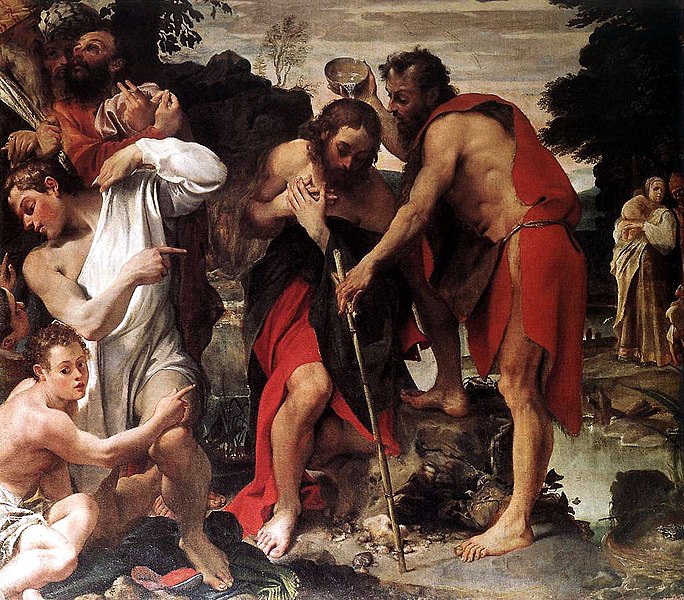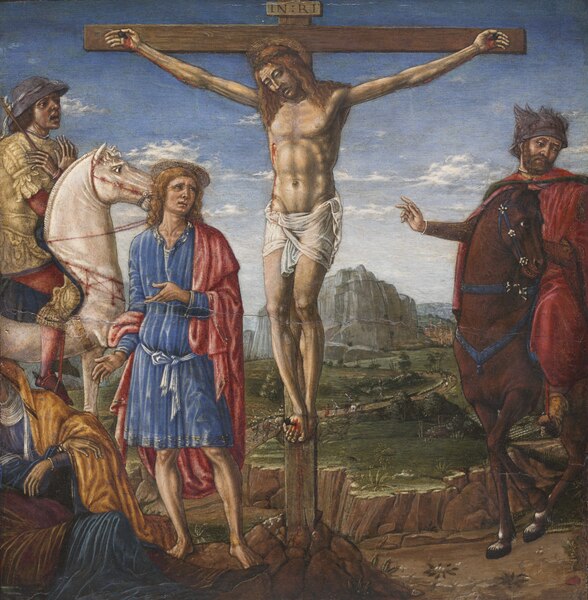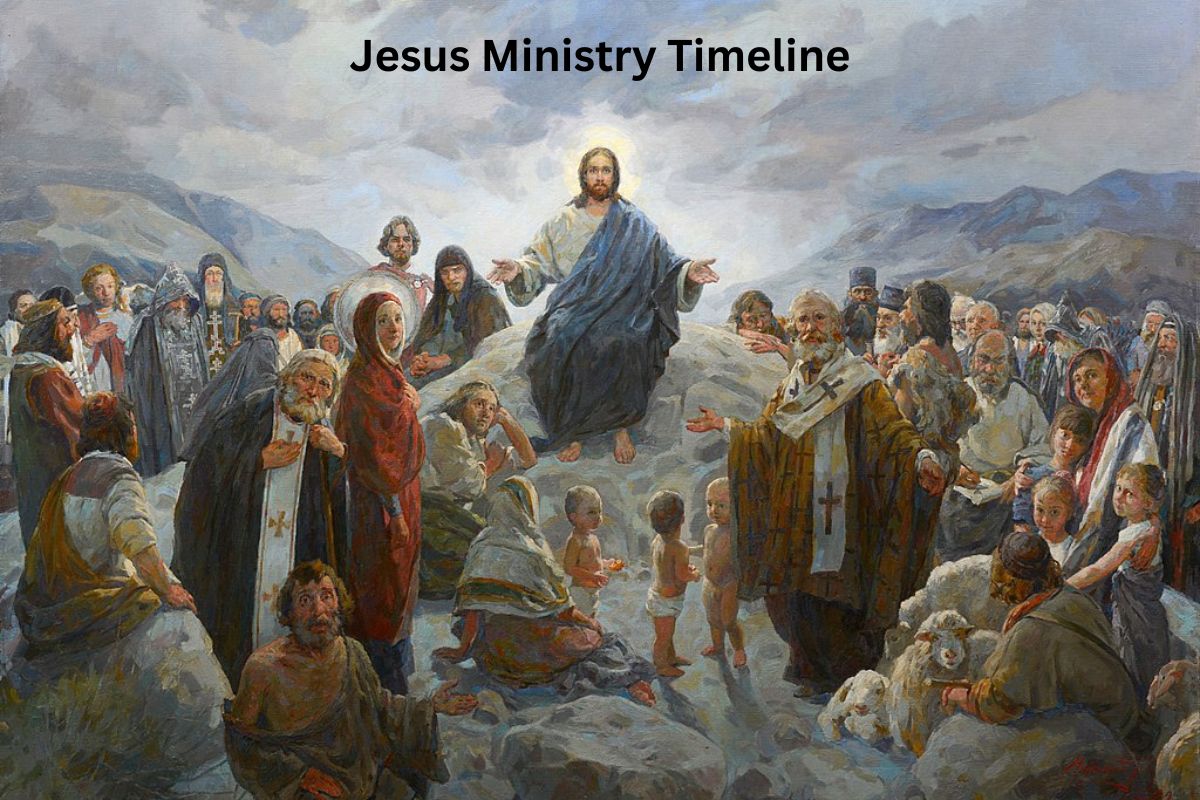Jesus of Nazareth, a central figure in Christianity, embarked on a transformative and impactful ministry in the early 1st century AD. His ministry, as recorded in the Gospels of the New Testament, is marked by teachings of love, compassion, and the Kingdom of God, as well as numerous miraculous deeds.
From his baptism by John the Baptist to his crucifixion, resurrection, and ascension, Jesus’ ministry is a foundational narrative in Christian faith, emphasizing redemption, eternal life, and the call to follow his teachings.
This timeline explores the key events that defined Jesus’ earthly mission and continue to shape the beliefs and practices of millions of Christians worldwide.
| Event | Date |
|---|---|
| Baptism by John the Baptist | 29-30 AD |
| Temptation in the Wilderness | 29-30 AD |
| Calling of the Disciples | 29-30 AD |
| Teaching and Miracles | 29-30 AD and beyond |
| Sermon on the Mount | 29-30 AD and beyond |
| Ministry in Galilee | 29-30 AD and beyond |
| Journey to Jerusalem | 29-30 AD and beyond |
| Conflicts with Religious Authorities | 29-30 AD and beyond |
| The Last Supper | 29-30 AD |
| Arrest, Trial, and Crucifixion | 30-33 AD |
| Resurrection | 30-33 AD |
| Post-Resurrection Appearances | 30-33 AD |
| Ascension | 30-33 AD |
Timeline of the Ministry of Jesus
Baptism by John the Baptist (29-30 AD)
Jesus’ public ministry officially began with his baptism by John the Baptist in the Jordan River. John was a prominent figure in the region, known for his preaching of repentance and the imminent arrival of the Messiah.
Also Read: Birth of Jesus Timeline
John initially hesitated to baptize Jesus, recognizing him as the one who should baptize him instead. However, Jesus insisted, emphasizing the importance of fulfilling all righteousness.
As Jesus was baptized, the heavens opened, and the Spirit of God descended upon him like a dove. A voice from heaven declared, “This is my beloved Son, with whom I am well pleased,” affirming Jesus’ divine identity.

Temptation in the Wilderness (29-30 AD)
Following his baptism, Jesus was led by the Spirit into the wilderness, where he fasted for 40 days and nights.
During this time of fasting and solitude, Satan came to tempt Jesus with various temptations. These temptations included turning stones into bread, jumping from the pinnacle of the temple to test God’s protection, and worshiping Satan in exchange for worldly power.
Also Read: Timeline of the Trials of Jesus
In each instance, Jesus resisted Satan’s temptations by quoting Scripture, demonstrating his commitment to God’s will and his refusal to succumb to worldly desires.
Calling of the Disciples (29-30 AD)
As Jesus began his ministry, he started calling individuals to be his disciples, which means “followers” or “students.” The Gospels mention several key disciples he called in the early stages of his ministry.
Among the first disciples were Simon Peter and his brother Andrew, who were fishermen. Jesus called them while they were casting their nets into the Sea of Galilee, saying, “Follow me, and I will make you fishers of men.”
James and John, the sons of Zebedee, were also called by Jesus while they were mending their nets with their father. They left their fishing boats to follow him.
Throughout his ministry, Jesus continued to call other disciples, both men and women, to join him in spreading his teachings and ministering to the people.

Teaching and Miracles (29-30 AD and beyond)
One of the central aspects of Jesus’ ministry was his teaching. He often spoke in parables and used everyday examples to convey profound spiritual truths.
Jesus’ teachings emphasized themes such as the Kingdom of God, love for God and one’s neighbor, forgiveness, and the importance of faith. The Sermon on the Mount, found in Matthew 5-7, is one of the most well-known examples of his teachings.
In addition to his teachings, Jesus performed numerous miracles. These miracles included healing the sick, giving sight to the blind, raising the dead, and feeding multitudes with a small amount of food. These acts of divine power demonstrated his authority and compassion.
Sermon on the Mount (29-30 AD and beyond)
The Sermon on the Mount is a pivotal moment in Jesus’ ministry, where he delivered a comprehensive message on ethics, morality, and the nature of the Kingdom of God.
The sermon includes the Beatitudes, a set of blessings pronounced on the poor in spirit, the meek, the peacemakers, and others. It also addresses topics like murder, adultery, love for enemies, and prayer.
This sermon is found in the Gospel of Matthew and is considered one of the most significant collections of Jesus’ teachings, emphasizing a high moral and ethical standard for his followers.

Ministry in Galilee (29-30 AD and beyond)
Much of Jesus’ ministry was concentrated in the region of Galilee, a northern province of ancient Israel. He performed many of his teachings and miracles in towns and villages around the Sea of Galilee.
In Galilee, Jesus gained a following of both Jewish and non-Jewish individuals, and his reputation as a healer and teacher spread throughout the region.
Some of the notable events in Galilee include the calling of the twelve disciples, the feeding of the five thousand, walking on water, and encounters with religious leaders who questioned his authority.
Journey to Jerusalem (29-30 AD and beyond)
As Jesus’ ministry continued, he made several journeys to Jerusalem, the religious and political center of ancient Israel. These journeys often coincided with important Jewish festivals, such as Passover, which attracted large crowds to the city.
These trips to Jerusalem were significant as they marked key moments in Jesus’ interactions with religious authorities and his growing conflict with them. He continued to teach and perform miracles along the way.
Conflicts with Religious Authorities (29-30 AD and beyond)
Throughout his ministry, Jesus clashed with the religious authorities of his time, including the Pharisees, Sadducees, and scribes. These conflicts often centered around his teachings, claims of authority, and perceived violations of religious traditions.
The religious leaders questioned Jesus about topics such as Sabbath observance, dietary laws, and his association with sinners and tax collectors. They sought to trap him in his words or discredit his authority.
The increasing tension between Jesus and the religious establishment ultimately played a significant role in the events leading to his arrest and crucifixion.

The Last Supper (29-30 AD)
The Last Supper is a pivotal event in Jesus’ ministry and is traditionally associated with the Jewish Passover meal. It took place in an upper room in Jerusalem, where Jesus gathered with his disciples to share a final meal together.
During the Last Supper, Jesus instituted the sacrament of communion, symbolizing his body and blood in the bread and wine. He also washed his disciples’ feet, demonstrating the importance of humility and service.
Jesus used this occasion to foretell his impending betrayal by Judas Iscariot and his crucifixion. He encouraged his disciples to remember him through the breaking of bread and the sharing of the cup.
Arrest, Trial, and Crucifixion (30-33 AD)
The events leading to Jesus’ crucifixion began with his arrest in the Garden of Gethsemane, where he was betrayed by Judas Iscariot with a kiss.
Jesus was subjected to a series of trials before Jewish religious leaders, including the high priest Caiaphas, and Roman authorities, including the governor Pontius Pilate.
Despite the lack of evidence of wrongdoing, Jesus was sentenced to crucifixion, a Roman form of execution, which took place at Golgotha, also known as the Place of the Skull, just outside Jerusalem.
The crucifixion event is central to Christian theology and belief, as it is seen as the sacrificial act through which Jesus atoned for the sins of humanity. It is traditionally dated to around 30-33 AD.

Resurrection (30-33 AD)
The Resurrection of Jesus is the most significant event in Christian theology. According to Christian belief, Jesus rose from the dead on the third day after his crucifixion, just as he had prophesied during his ministry.
The accounts of the Resurrection are found in all four Gospels, with slight variations in details. Common elements include the discovery of the empty tomb by women disciples, encounters with angels who announced his resurrection, and appearances of Jesus to his followers.
The Resurrection validated Jesus’ claims of divinity, triumph over sin and death, and fulfilled the hope of eternal life for believers. It is celebrated as Easter, the most important festival in the Christian calendar.
Post-Resurrection Appearances (30-33 AD)
Following his Resurrection, Jesus appeared to his disciples and followers over a period of approximately 40 days. These post-Resurrection appearances served to strengthen the faith of his disciples and provide further teaching and encouragement.
Some notable post-Resurrection appearances include Jesus’ encounter with Mary Magdalene at the tomb, his appearance to two disciples on the road to Emmaus, and his interactions with the disciples in a locked room.
During these appearances, Jesus provided additional insights into the Scriptures, reaffirmed his mission, commissioned his disciples to spread the Gospel, and promised the coming of the Holy Spirit.
Ascension (30-33 AD)
The Ascension of Jesus is the event where, according to Christian belief, Jesus was taken up into heaven in the presence of his disciples. It marks the conclusion of his earthly ministry and his return to the heavenly realm.
The Ascension is described in the Bible in the Book of Acts, where it is recorded that Jesus was taken up into the clouds, and his disciples witnessed this event.
Before ascending, Jesus instructed his disciples to wait in Jerusalem for the coming of the Holy Spirit, who would empower them to be his witnesses “to the ends of the earth.” This event is often considered the birth of the Christian Church.
The Ascension is celebrated on Ascension Day, which falls 40 days after Easter, and is a significant aspect of Christian belief, signifying Jesus’ exaltation and continued intercession for believers.
